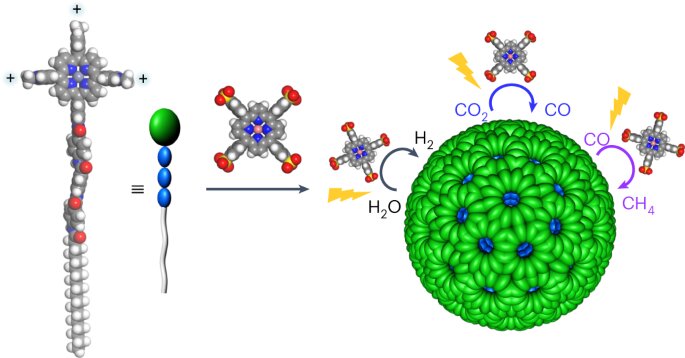Researchers at the Shanghai Institute of Organic Chemistry of the Chinese Academy of Sciences have developed a new strategy for visible-light-induced selective carbon dioxide (CO2) conversion. The researchers have used an artificial photosynthetic chromatophore nanomicelle system based on the structure of natural photosynthetic purple bacteria to create this system. The study is published in the journal Nature Catalysis.
Background
Photosynthesis is the ultimate source of energy and organic matter for almost all living organisms. Natural photosynthetic organelles use solar radiation to produce energy-rich compounds from water and atmospheric CO2 through supramolecular assemblies. Even though artificial photocatalytic cycles have shown higher intrinsic efficiencies, low selectivity and stability in water for multi-electron CO2 reduction hampers their practical applications.
Methodology
The researchers used a supramolecular assembly approach to develop an artificial photosynthetic chromatophore nanomicelle system based on the structure of natural photosynthetic purple bacteria. The system was applied to selective CO2 catalytic conversion in water under visible light irradiation and showed excellent stability and efficiency. The researchers proposed a promising solution for energy conversion and storage through “zero-carbon cycle” pathways, which is an effective way to alleviate the energy crisis and reduce carbon emissions.
Results
The nanomicelles assembled from amphiphilic tri-block porphyrin-based supramolecules are extremely stable in aqueous phase due to the existence of intermolecular hydrogen bonds. As a chromatophore, the nanomicelles exhibited obvious light-harvesting antenna effect and strong resistance to photobleaching. Moreover, electropositive ring-like porphyrin arrays of 4.2 nm in diameter were observed on their surface, and each sub-structure consists of ca. 12 porphyrin by calculation.
For efficient electron injection, an electronegative carbon monoxide catalyst was chosen as the ideal catalyst because the space distance between the catalyst and the ring-like porphyrin array was drawn closer by electrostatic force. Under the irradiation of visible light, the artificial photocatalytic system achieved the conversion of CO2 to methane with high efficiency and selectivity.
This innovative research by Chinese researchers has developed a new strategy for visible-light-induced selective carbon dioxide (CO2) conversion by mimicking the key elements and assembly structures of natural photosynthetic purple bacterial chromatophores through supramolecular self-assembly. This work provides new insights for accurately simulating the biological structures and functions of supramolecular assemblies and energy conversion for artificial photosynthesis. The results provide a promising solution for energy conversion and storage through “zero-carbon cycle” pathways, which could alleviate the energy crisis and reduce carbon emissions. The study also proposes a two-stage mechanism in which carbon monoxide was regarded as an intermediate species, which was further proved by isotope labeling experiment, steady-state and transient absorption spectra, and density functional theory calculations.



Leave a Reply